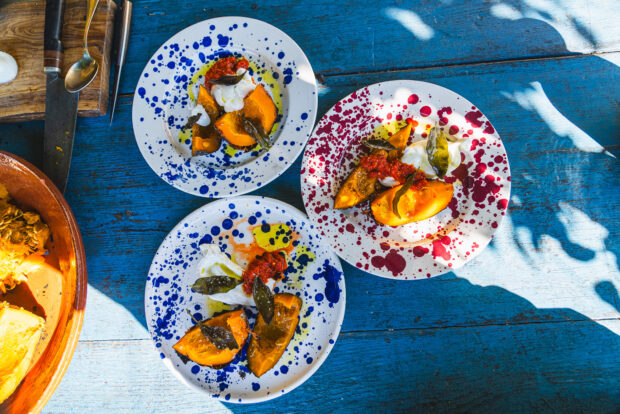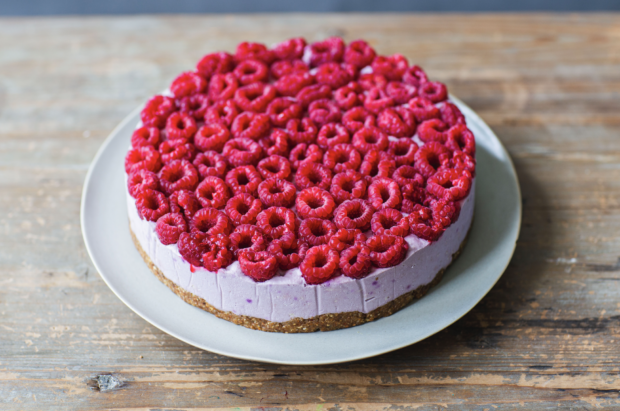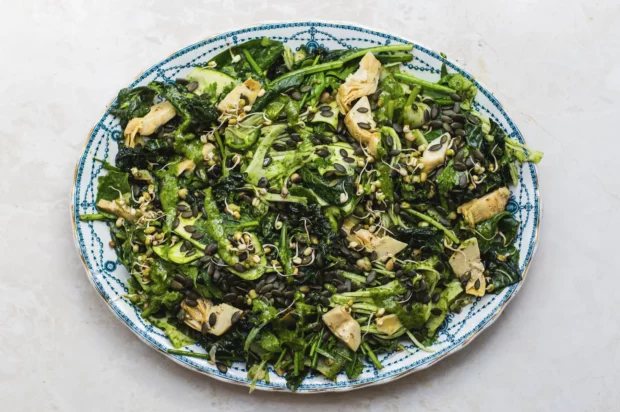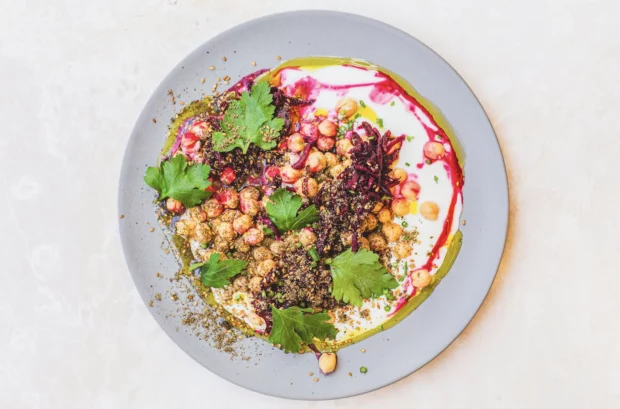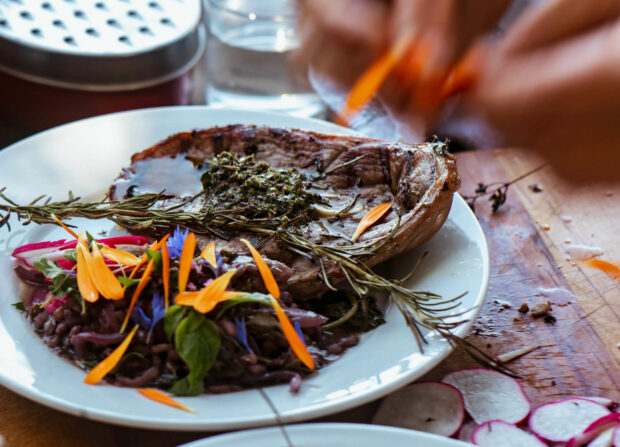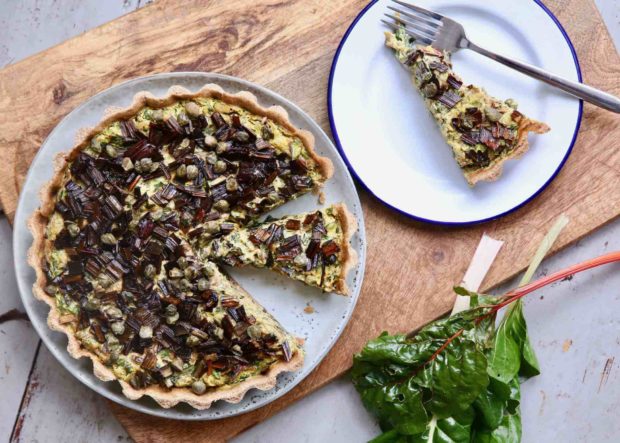
Fermented Beetroot, Yoghurt, Chickpeas and Za’atar
Low Energy Meals. This recipe is part of my Cooking Without Heat Series with EON.
As salad season approaches, I like to take advantage of the fair-weather by preparing meals without heat – saving energy and eating al fresco! A salad is so much more than iceberg lettuce, tomato and cucumber, a salad can be a satiating, simple and low-impact meal and a great way to feed a crowd with little effort. This series redefines what a salad is and explores cooking without heat, using acid (citrus and vinegar), fermentation and salt to ‘cook’ ingredients.
This series will teach you how to make low impact recipes that are great for summer nights, garden parties and informal social occasions.
Fermentation ‘cooks’ ingredients without heat saving energy whilst making them more nutritious and rich in beneficial probiotic bacteria.
Sauerkraut is traditionally made with cabbage, however any vegetable can be sliced or grated and made in the same way. Beetroot is delicious fermented in this way. The juice becomes deep purple creating a wonderful probiotic tincture that paints the yoghurt in this dish a beautiful magenta as it merges with the olive oil.
If you’re fortunate enough to find fresh beetroots with the leaves still attached, don’t throw them away. Saute the leaves and stalks like rainbow chard, with garlic and olive oil or use in place of other leafy greens.
PREP TIME
20 minutes
COOK TIME
3-4 days, to allow the beetroot to ferment
SERVES
2
Ingredients
To make the fermented beetroots
- 400g beetroots
- Sea salt to taste
To make the beetroots, yoghurt, chickpeas and za’atar salad
- 100g live yoghurt or a plant based alternative
- 1 tin chickpeas, drained
- Extra virgin olive oil, to taste
- 6-8 heaped tbs of fermented beetroots and some of their juice
- Za’atar to taste
- 4 sprigs flat leaf parsley, stalks finely chopped, leaves roughly chopped
- Optional, to serve: crudités or and bread
Directions
To make the fermented beetroots. Wash then grate the beetroots with the skins on. Season generously with salt, then mix well. Using a rolling pin or muddler, bruise the beetroot, massaging the salt into it until the juices begin to run. Taste and adjust the seasoning if necessary, it should taste a little salty and well seasoned, but delicious and perfectly edible.
Now pack the beetroot into one large or several smaller jars, pushing it down firmly as you go with the pin or muddler. When the jars are full, squash down. The liquid should rise above the beetroot, if it doesn’t add a drop of filtered water and pinch of salt, making sure the liquid is above the beetroot. Place a lid loosely on the jar or jars and leave at room temperature for a minimum of three days. When it begins to bubble and tastes slightly acidic and funky it is ready! At this point you can either continue to ferment at room temperature for months or even a year or put it in the fridge to halt the fermentation.
To make the beetroots, yoghurt, chickpeas and za’atar salad. Spread the yoghurt onto two serving plates with the back of a spoon. Top each plate with half a tin of chickpeas, drizzle with olive oil, add three to four heaped tablespoons of fermented beetroot and some of their juice. Finish with a sprinkle of za’atar to taste and the chopped parsley and stalks.
Enjoy with optional crudités or and bread.
Share
Share
Discover more recipes

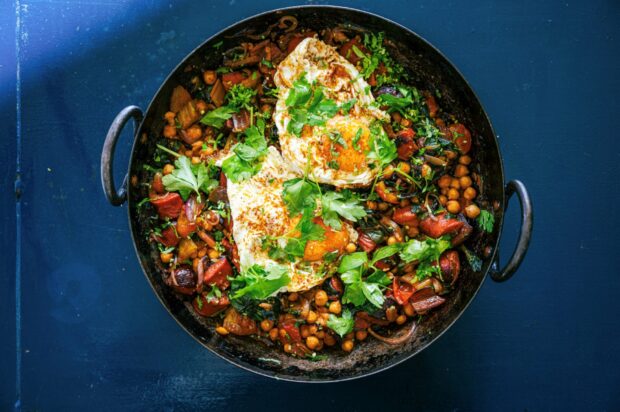
Chickpea & Chorizo Brunch Recipe
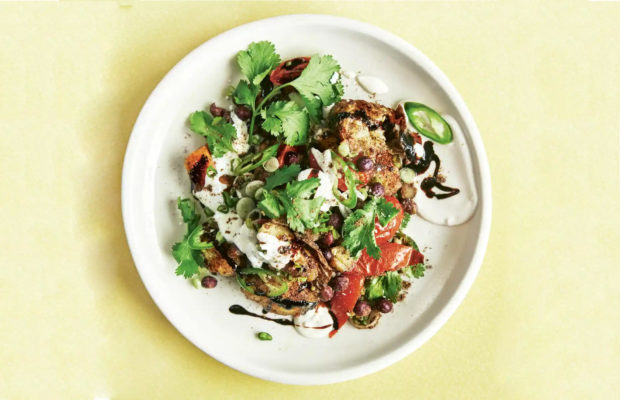
Brunch chaat with carlin peas and tomatoes

The best (plant based) carrot cake I’ve had
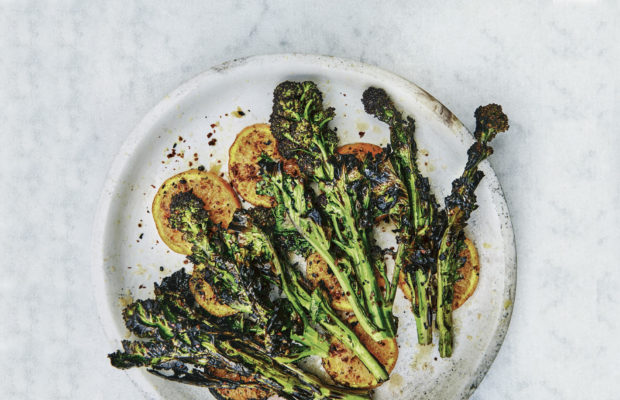
Chargrilled purple sprouting broccoli and clementines
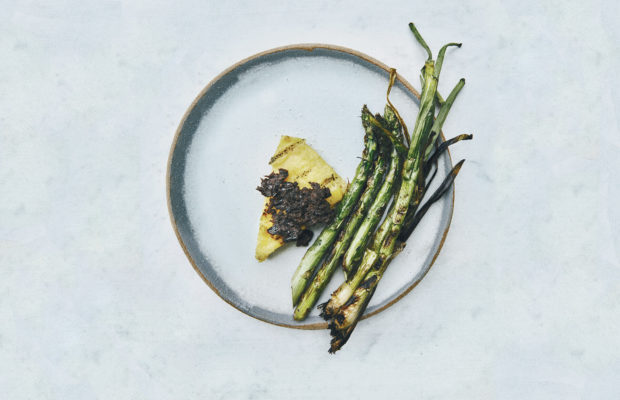
Chargrilled asparagus with spring onions, polenta and tapenade

Sustainability Spotlight Asparagus

How to use up green or squishy strawberries

The Pulp Fiction Burger

Regenerative agriculture

Waste Not… Chocolate
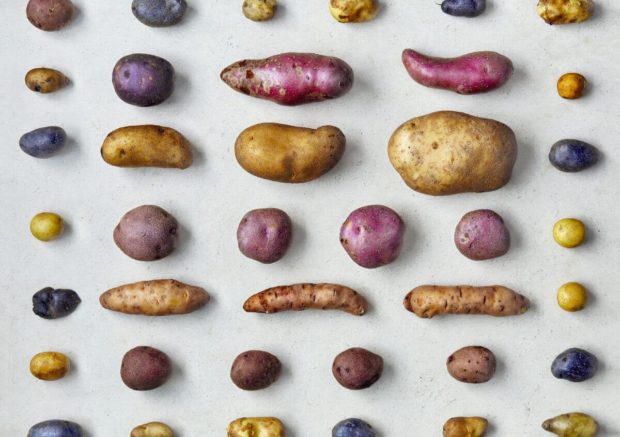
Biodiversity

Food Sustainability

Waste Not… Lettuce

Waste Not… Celery

Waste Not… Lemons

Waste Not… Cauliflower

Waste Not… Potato Peelings

Palestinian Maftoul, Roasted Roots and Chickpea broth
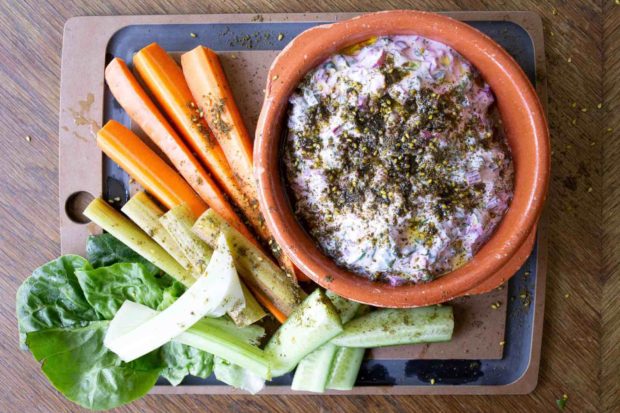
Waste Not… How To Make Your Beetroot Leaves Into a Delicious Dip
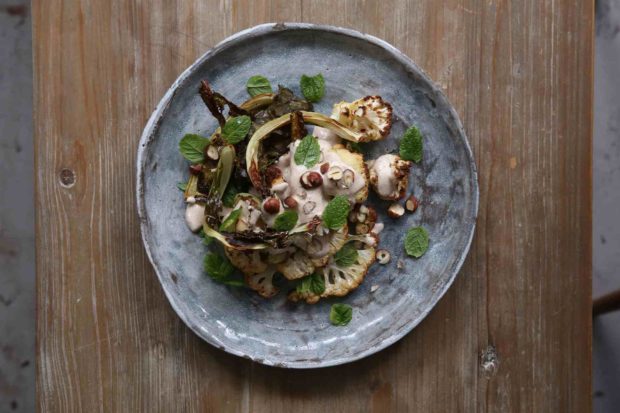
WWF – One Planet Plate – Roast cauliflower steaks, crispy leaves and hazelnut sauce

Rhubarb and Hibiscus Muscovado Pavlova
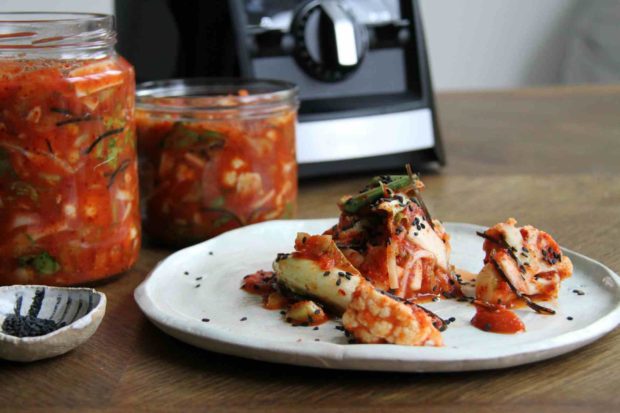
Zero Waste, Cauliflower Leaf and Floret Kimchi
Autumn / Apricot Frangipane

Chocolate pot with Candied Beetroot
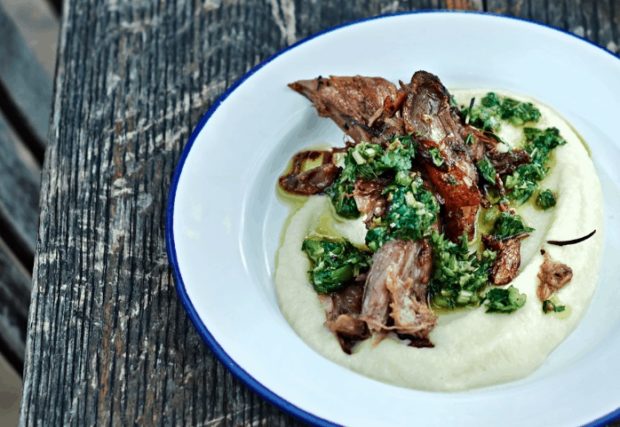
Salt Marsh Hogget, celeriac puree, green sauce
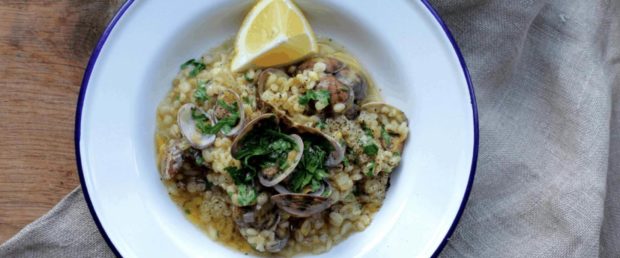
Clam, leek and pearl barley risotto
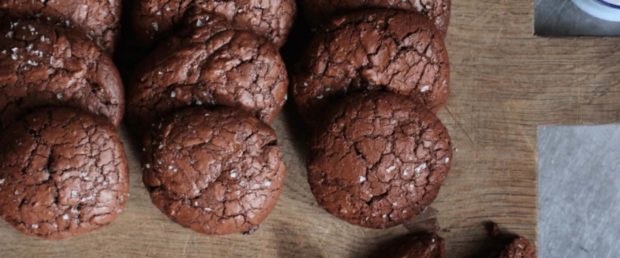
Chocolate salted rye cookies
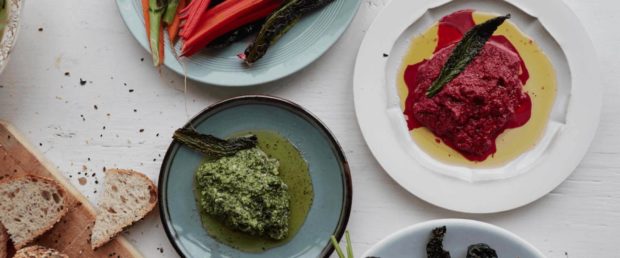
Cavolo nero and walnut dip
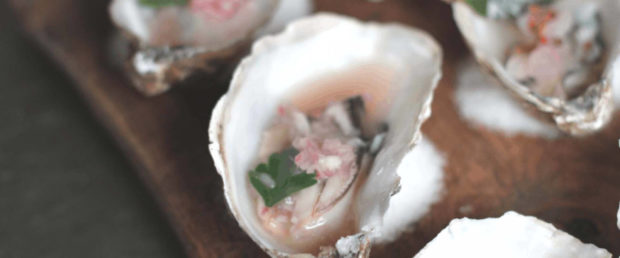
Oysters: Smoked, Pickled, Ceviche’d

Five seasonal pickles made with abundant and affordable roots
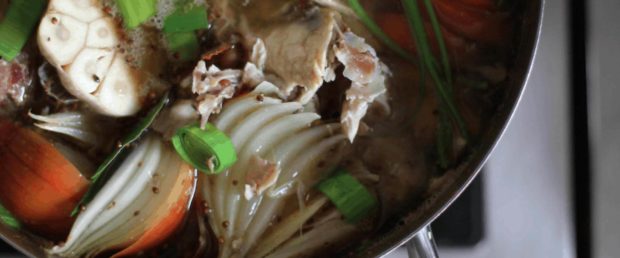
Borough Market January – Rejuvenating Bone Broth
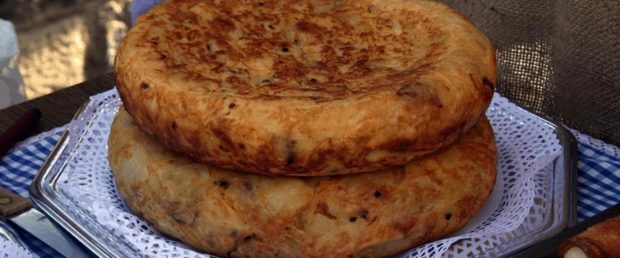
Leftover roast potato tortilla

Fish on Friday, Spider Crab Paella

How to cook and prepare a spider crab
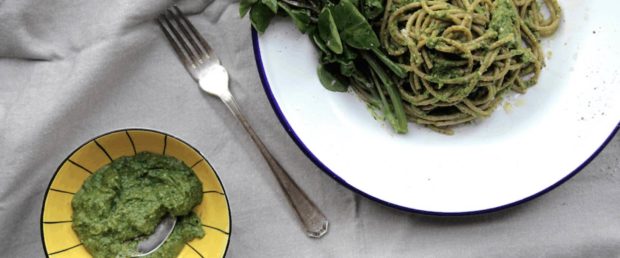
Veg Box – Watercress

June – Fish on Friday, Pan-fried pollack with aioli and baby artichokes

Wild Food, foraging in May

Veg Box – Wild Garlic

May – Fish on Friday, Ceviche
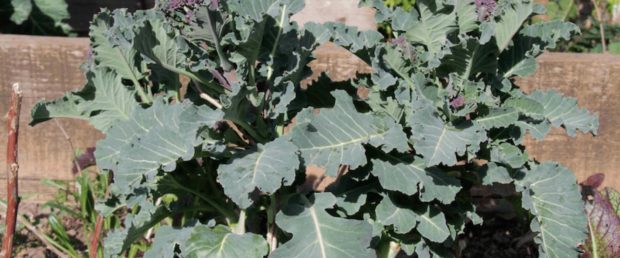
Purple sprouting broccoli with melted blue vinny
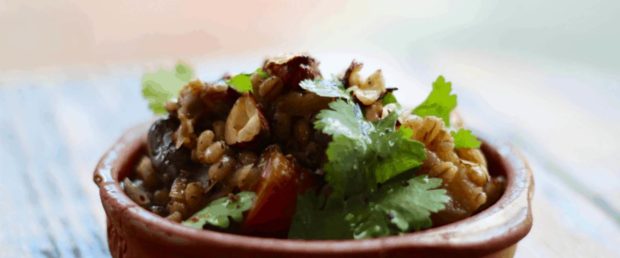
Pearl Barley Pilaf with honey, roots and hazelnuts
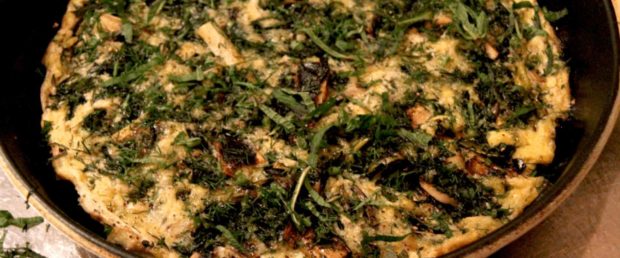
Frittata with charred spring onions, dill, mint

Veg Box – Spring onions
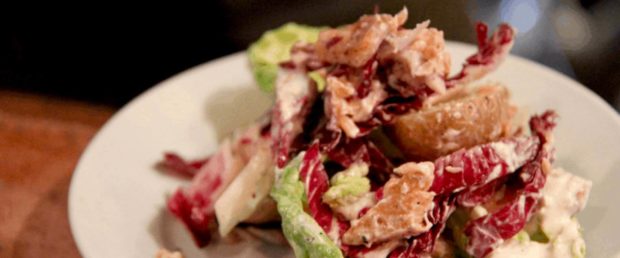
Smoke and forage

Ultra Light Sponge Cake with Orange Sorbet

Pomegranate Chocolate Brownies

An Alternative Valentine’s Banquet – Heart Kebabs
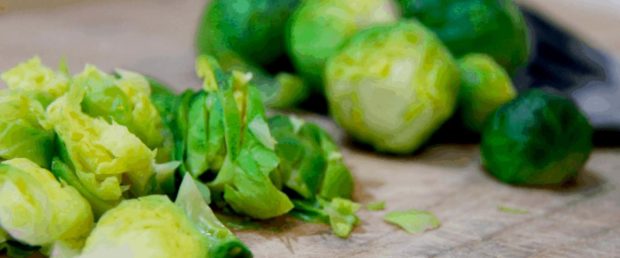
Christmas Leftovers – Brussel Colcannon
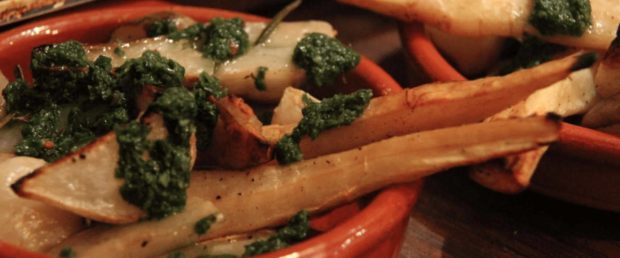
Seasonal Roasties with Chimichurri
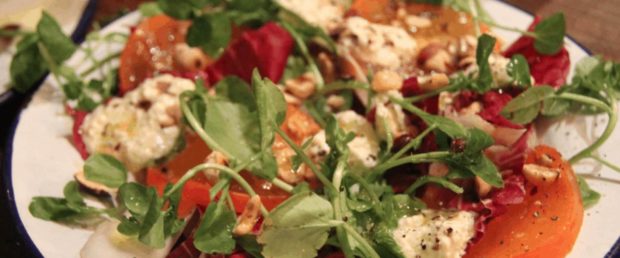
A Fresh Christmas Persimmon Salad
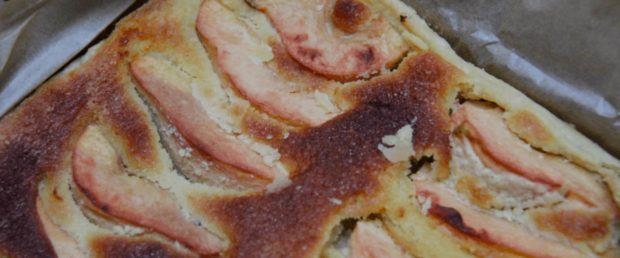
Quince Frangipane

Pumpkin Pie with Cardamom and Maple Syrup
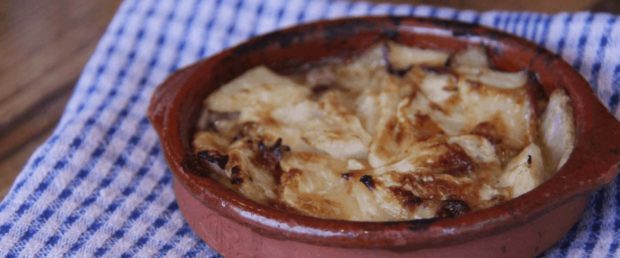
Celeriac Gratin with Anchovies
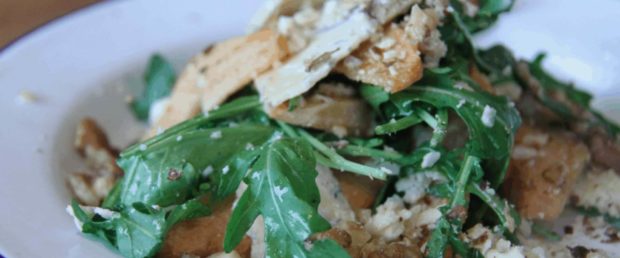
Roasted Quince, Stichelton, Leaves, Walnuts and Agave Syrup
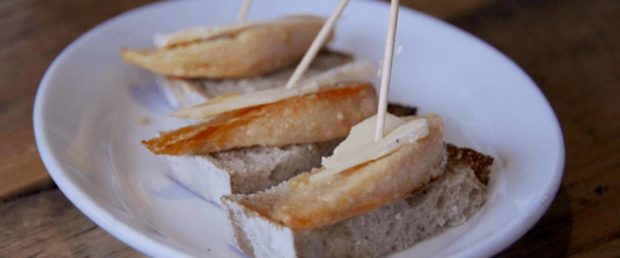
3 Pinchos – Canapes

Crown Prince Squash Soup with Chili Oil
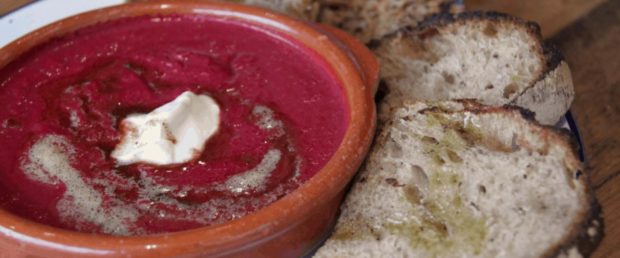
Beetroot Soup with Yoghurt and Caramelised Butter

Gurnard Parcel with Fennel

Deviled Kidneys
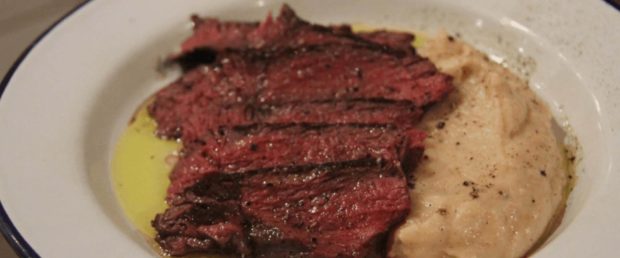
Venison Steak with Parsnip Puree

Roast Beetroot, Pak Choi, Labneh and Cumin
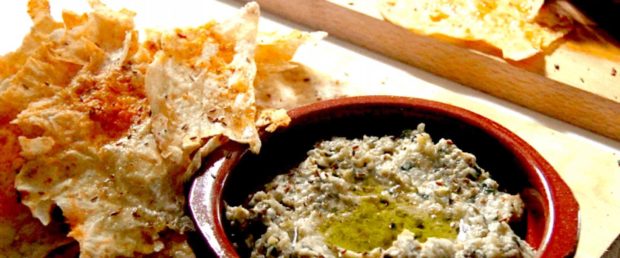
Babaganush and Homemade Flat Breads
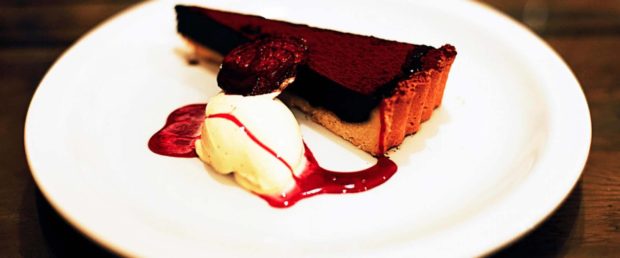
Chocolate Torte with Caramelised Beetroot

Cleo the Friendship Bread: Video Blog
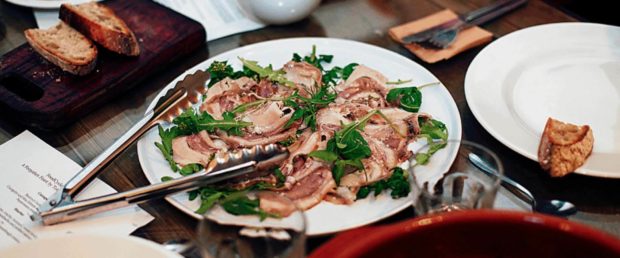
Porchetta di Testa – Rolled Pig’s Head
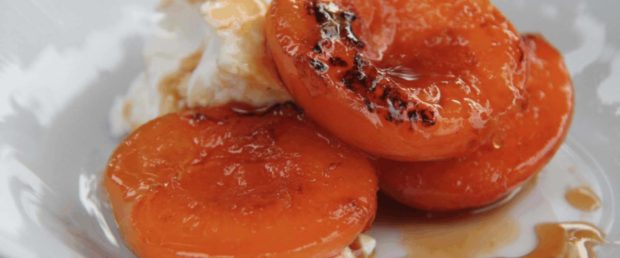
Homemade Curd or Ricotta Style Cheese
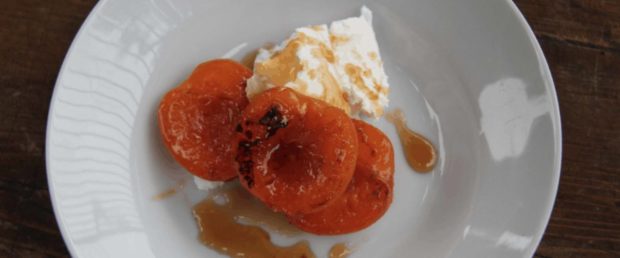
Grilled Apricots with Ricotta and Somerset Cider Brandy

Cleo the Friendship Bread

Beech Leaf Gin by Peter from Absolutely Wild

Sheep Head with Cumin and Lemon
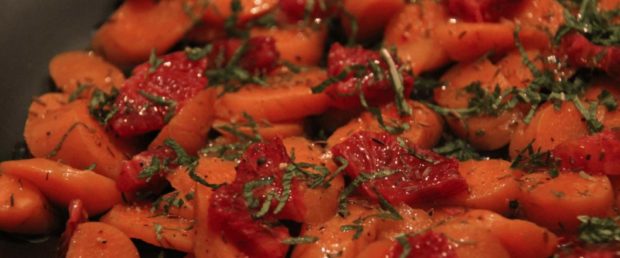
Carrot and Blood Orange Salad with Mint and Cumin

Sourdough Bread, Clay Ovens and Leaven
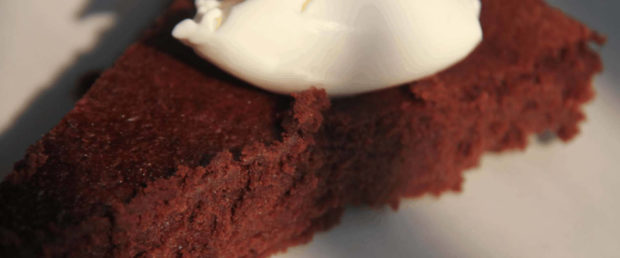
Beetroot Chocolate Cake
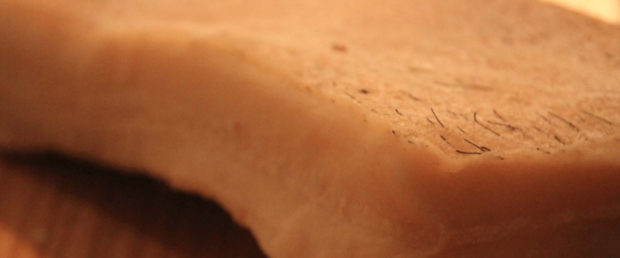
Cure pork fat at home

A Punchy Salad of Celeriac and Squash for the New Year
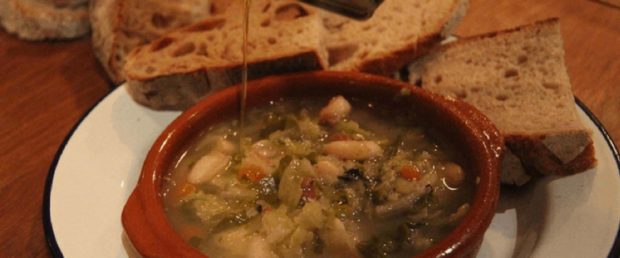
Seasonal Winter warmer of cabbage soup with cured pork fat

The Life of a Loaf

Feeding the 5000: Pigs Liver Bruschetta

Feeding the 5000: Ribollita, a traditional Tuscan soup made with leftovers

Devilled kidneys on toast
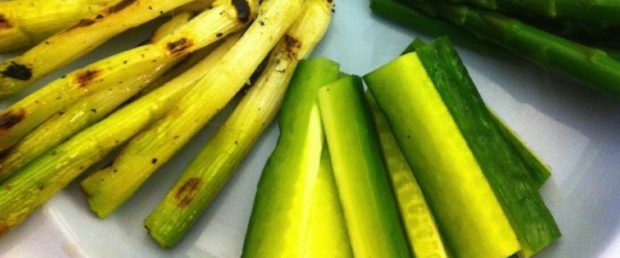
Mis-fit veg with babaganush

Brain Food
Discover more articles

Why I cook with olive oil
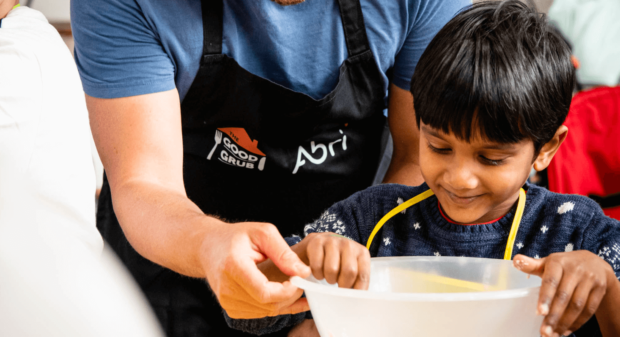
Eating sustainably on a budget; an opportunity for everyone

Plants vs. Meat, Where Do You Stand?

The best (plant based) carrot cake I’ve had

Sustainability Spotlight Asparagus

Fairtrade: Growing Women in Coffee
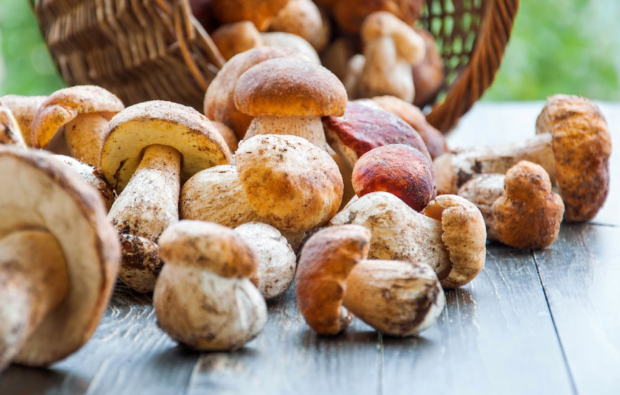
Climate Change

How to use up green or squishy strawberries
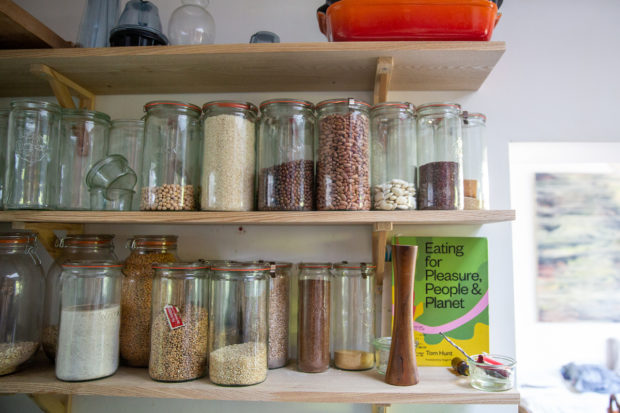
Three: bulk-buying and co-ops

Regenerative agriculture
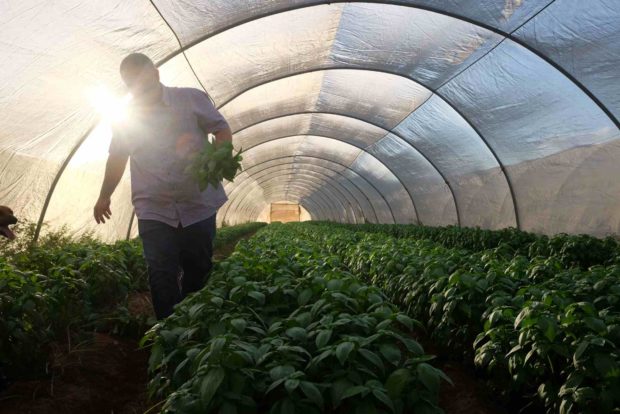
Two: buy from local markets

Waste Not… Chocolate

The Long Read: Our Food System

Biodiversity

Food Sustainability

Waste Not… Lettuce

Waste Not… Celery

Waste Not… Lemons

Waste Not… Cauliflower

Waste Not… Potato Peelings
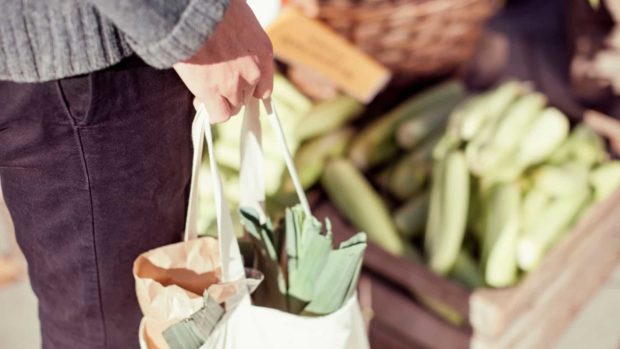
One: Cut down on plastic

Cooking at Dan Barber’s WastED Restaurant
For more of Tom’s recipes... Check out his new book

Eating
for
Pleasure,
People &
Planet
By TOM HUNT
Tom's manifesto, 'Root to Fruit' demonstrates how we can all become part of the solution, supporting a delicious, biodiverse and regenerative food system, giving us the skills and knowledge to shop, eat and cook sustainably, whilst eating healthier, better-tasting food for no extra cost.


